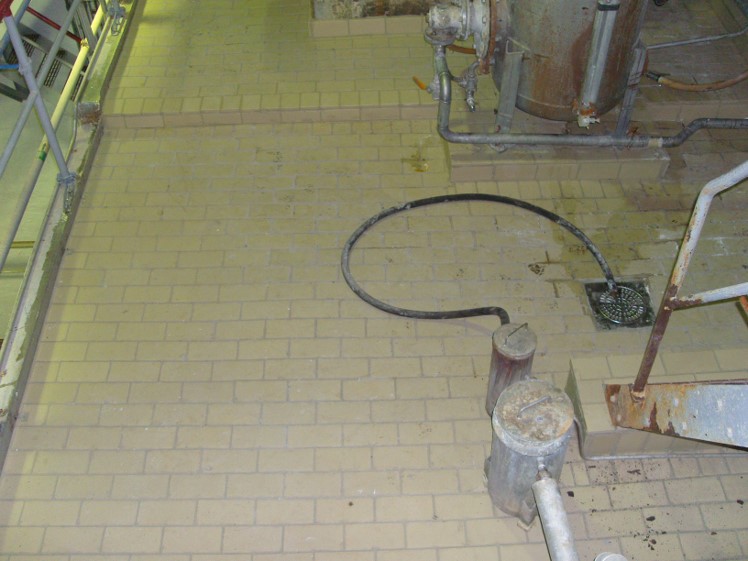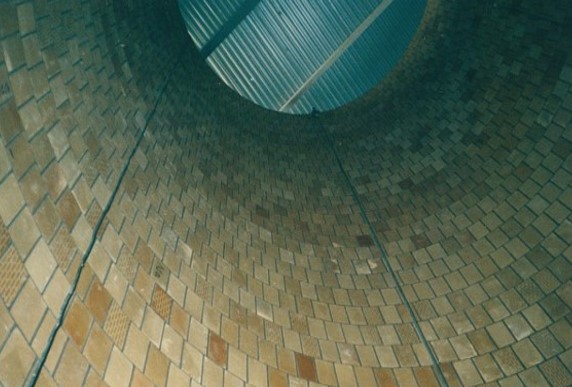Acid-proof linings
In general, an acid-proof brick should exhibit a high degree of acid resistance, have a high density, high resistance to abrasion and high compressive strength. Brick work that is exposed to temperature changes must be built of bricks that are able to withstand such stresses and strains. To choose the right mortar and tiles is the most important thing for an acid proof lining.
Bleaching Towers
We use acid-proof ceramic bricks. This acid proof brick could be used in lining of containers such as bleaching towers, digesters, cooling towers, pickle tanks, reaction/absorption towers, acid tanks, but even acid-proof floors where the mechanical stresses are large. We have special shapes for cone parts and top parts. We have two kind of mortar for bleaching towers, one for low temperature and one for high temperature. The primer we use is based on vinyl ester. For the top part we have a new design to be able to protect the steel against corrosion.
Sulfuric Acid Tank

Here we use the same type of materials as in the bleaching towers. This bricklaying design is the best both in regards to quality and economy.
In places where there is acid , hot water, salt, bacteria etc., i.e. media that cause problems for concrete or steel and are difficult to clean away, we always use acid proof lining. The type depends on the media inside the tank. If you have problems with bacteria, it is difficult to clean the concrete. Here we use glassed tiles, which are easy to clean.
Floorings

Here we also use acid proof lining. For protection we use extruded tiles. These unglazed tiles can be used for both floors and walls. The properties of these tiles make them particularly suitable for floors that require durability, resistance to chemicals, ease of cleaning and a non-slip surface, e.g. in industrial facilities, chemical factories, dairies, breweries and warehouses, laundries, boiler rooms, fire stations, etc. The mortar we use displays excellent resistance to acids and alkalis in higher concentrations, as well as oxidizing media, greases and oils.


 Get installation instructions direct in your mobile phone, together with product and safety data for all Höganäs Borgestad monolithic products
Get installation instructions direct in your mobile phone, together with product and safety data for all Höganäs Borgestad monolithic products
Find us on social media